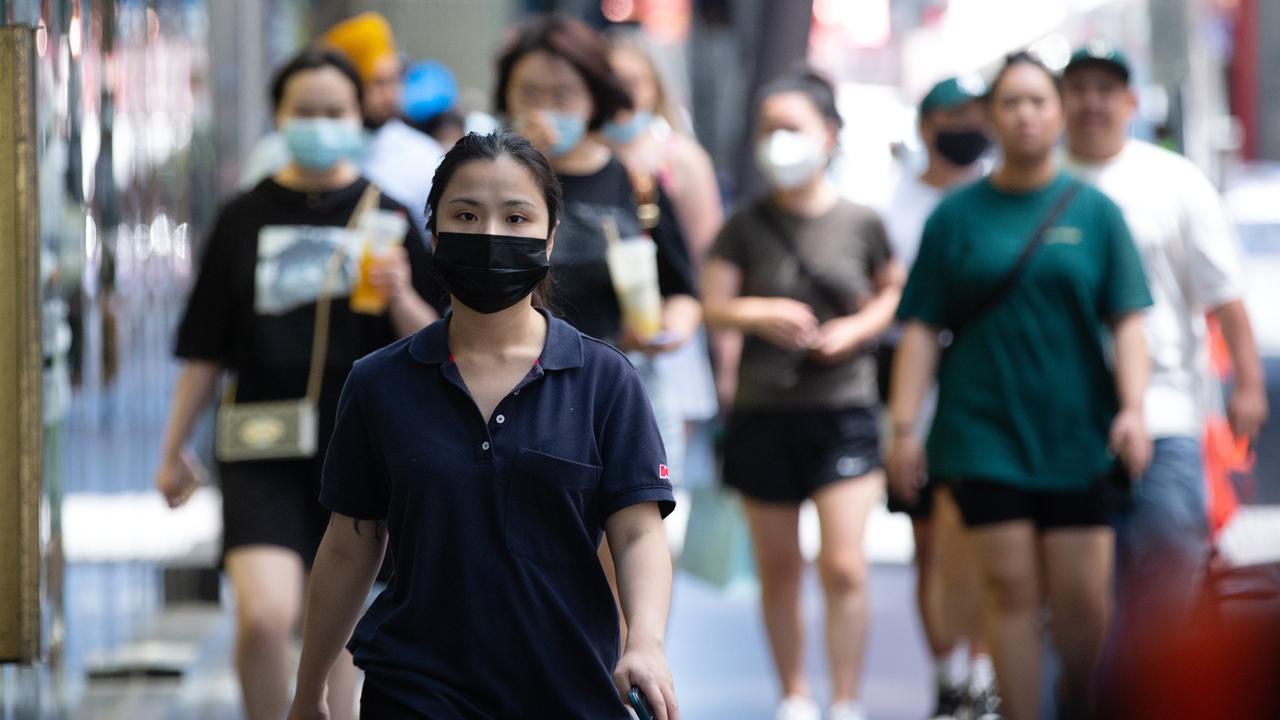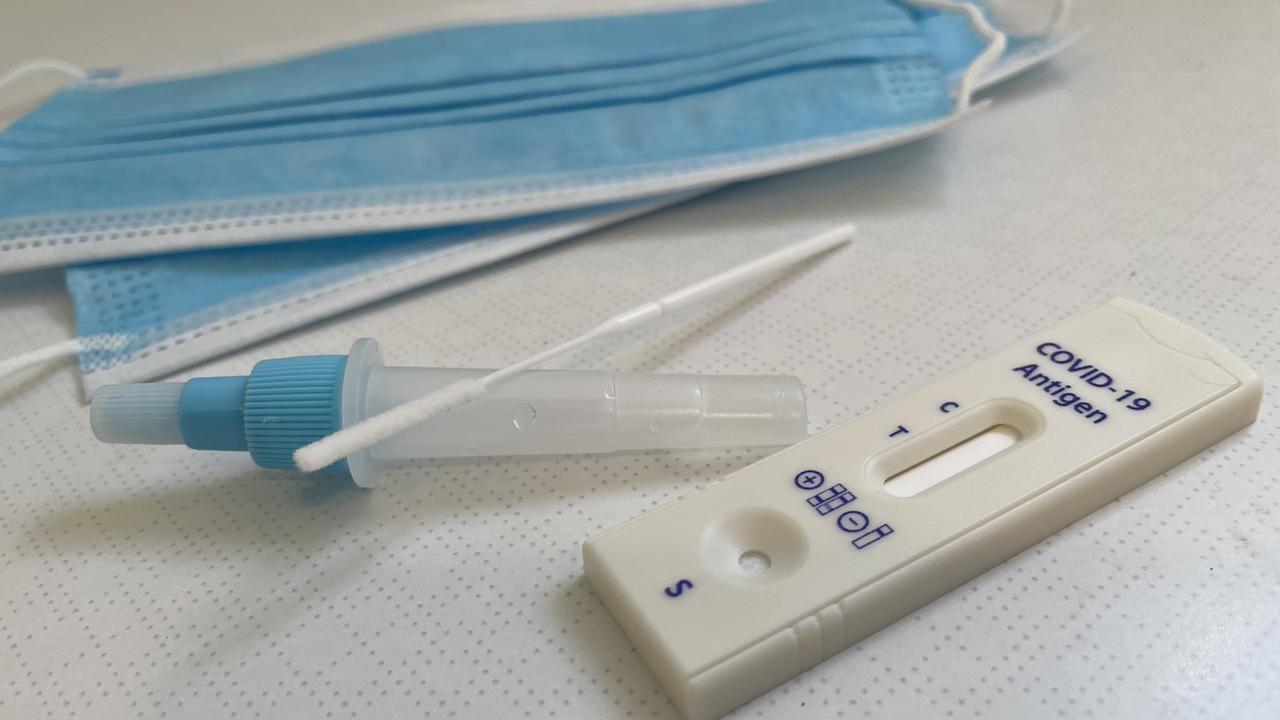‘Pirola’ hits Victoria, Covid rips through nursing homes: See list of places affected here
Victoria has the most Covid outbreaks in nursing homes of any state, with 643 resident cases and outbreaks in 106 facilities. See list of nursing home outbreaks here.
Western Australia will bring back mask mandates in its public hospitals from Monday, with far fewer Covid hospitalisations and deaths than Victoria.
While 126 Victorians have died in the most recent 28-day reporting period and an average of 317 people a day this week have been hospitalised (14 in intensive care) the WA mask mandate was triggered with 57 hospital admissions, four people in intensive care and four deaths of elderly citizens over the course of a week.
Like Victoria, the new Covid strain dubbed Pirola — described as the most deadly since the first Omicron mutation — has been detected in Western Australia and the Omicron XBB variant EG.5 is circulating.
Western Australia has not had mandatory health measures since its Covid state of emergency ended in October 2022.
But the state’s chief health officer Andy Robertson said the immunity of Western Australians was waning and it was time to bring back some settings.
“Given the increase in Covid hospitalisations and health staff off sick, health service providers have agreed on consistent mask recommendations across our public health system,” he said.
WA Premier Roger Cook said the state’s hospital staff and patients would be ordered to wear surgical masks in high risk clinical areas from Monday.

Mask wearing would also be encouraged for everyone in all clinical areas of hospitals.
“We need to do what we can to make sure we’re keeping each other safe — especially our most vulnerable,” Mr Cook said. “It’s a simple measure that will reduce the spread of Covid-19 and help keep our most vulnerable safe.”
Victoria has by far the highest number of Covid outbreaks in nursing homes of any state — but mask rules are ad hoc across most, and many do not enforce any.
The latest Australian Department of Health Covid data, updated on November 16, shows there are currently a horror 643 Covid cases among Victorian nursing home residents, 204 cases in staff and Covid outbreaks in 106 facilities.
It compares to 30 nursing home Covid outbreaks, 158 resident cases and 87 staff cases in WA.
Victoria also has more nursing home resident Covid infections than NSW, which has 477, and more facility outbreaks and staff cases than its neighbouring state.
However, Victorian hospitals can enforce masks if they choose, to cope with surging Covid cases, after the state’s healthcare system was moved to a “stage two operational response” earlier this month.
The four-level system, designed in 2022, outlines measures individual hospitals can consider such as mask mandates and increased telehealth to respond to growing demand.
Stage two measures are far less drastic than higher settings — such as a level four rating which can see the cancellation of elective surgery — and allows individual hospitals to make their own rules as opposed to following statewide mandates.
Covid Pirola hits Vic
A new Covid strain dubbed Pirola — described as the most deadly since the first Omicron mutation — is now circulating in Victoria.
Health officials warned in August BA. 2.86, nicknamed Pirola, would be difficult to contain if it hit Australian shores, after being detected in Denmark on July 25, and then in the US and Israel.
But Pirola has now been detected in Victoria’s wastewater.
It is classified as a WHO variant “under monitoring” because of its high divergence from other stealth Omicron BA. 2 mutations.
The Victorian Covid-19 Surveillance Report, released on Friday morning, shows Covid strain EG.5 and one of its sublineages, HK. 3, are currently the most dominant in the state — with the latter rising rapidly and being closely monitored.
But BA. 2.86 had now also been detected at low levels, the Victorian Department of Health said.

The seven-day average of patients in intensive care has also increased this week, from 12 to 14, but hospitalisations have dropped very slightly from an average of 321 a day last week, to 317 this week.
“Quantitative wastewater levels indicate there are currently high Covid-19 viral loads in Victorian metropolitan wastewater. Higher levels of SARS-CoV-2 in wastewater suggest higher prevalence of Covid-19 infections in the community,” the health department said.
RATs tested against emerging strains
Fears Rapid Antigen Tests (RATs) may not be able to detect the latest Covid strains appear unfounded.
The Herald Sun has been told recent testing by the Victorian Department of Health, together with the Victorian Infectious Diseases Reference Laboratory, has shown no cause for concern.
And while other testing of RATs by the federal government’s Therapeutic Goods Association (TGA) in association with Melbourne’s Doherty Institute initially cast doubt over the reliability of a small number of brands in picking up emerging variants — those brands have since been removed from sale in Australia.

The TGA’s “post-market review of antigen and rapid antigen tests” looked at all Covid-specific laboratory antigen tests and rapid antigen tests — including point-of-care and self-tests — included in the Australian Register of Therapeutic Goods (ARTG) to ensure they could detect the latest virus mutations.
The TGA said the comprehensive testing had been conducted because of concerns Covid mutations could “alter the structure of the expressed viral protein (and) as a result test kits may no longer be able to sensitively detect the virus, leading to false negative results”.
RAT manufacturers had been instructed by the TGA to supply study data validating the performance of their test kits — including recombinant protein studies, live virus studies, inactivated virus studies, and clinical studies, it said.
As each Covid Variant of Concern (VoC) now emerged, RAT manufacturers were expected to undertake a comprehensive analysis to verify their tests continued to perform as intended, and to report any issues to regulatory authorities.
“As an additional measure, the TGA commissioned the Peter Doherty Institute for Infection and Immunity (the Doherty Institute), in collaboration with the National (Serology) Reference Laboratory (NRL), an operating division of St Vincent’s Institute of Medical Research, to undertake laboratory testing. This was to verify the manufacturer’s claims regarding the analytical sensitivity … for SARS-CoV-2 (wild-type – original SARS-CoV-2 strain) and the Delta and Omicron variants,” it said.

Testing was conducted on 92 batches of RATs, with the results showing 79 were compliant with all the TGAs requirements, including being of acceptable product quality and sensitive enough to detect “Wild-type” Delta, and Omicron variants.
In the first round of testing, just 72 RATs met TGA requirements, with seven initially found to be non-compliant and retested.
During a second round of testing, all seven RATs were found to be compliant for analytical sensitivity and quality requirements.
However, six RATs were found to be non-compliant and were not retested.
“All of these self-test RATs found to be non-compliant were cancelled from the ARTG, initiated either by the sponsor or the TGA, and are no longer supplied in Australia,” the TGA said.
“The post-market review is now complete. However, the TGA will continue to monitor the performance of all RATs included in the ARTG and may re-open the review or commence additional testing if required.”
More Coverage
Originally published as ‘Pirola’ hits Victoria, Covid rips through nursing homes: See list of places affected here




